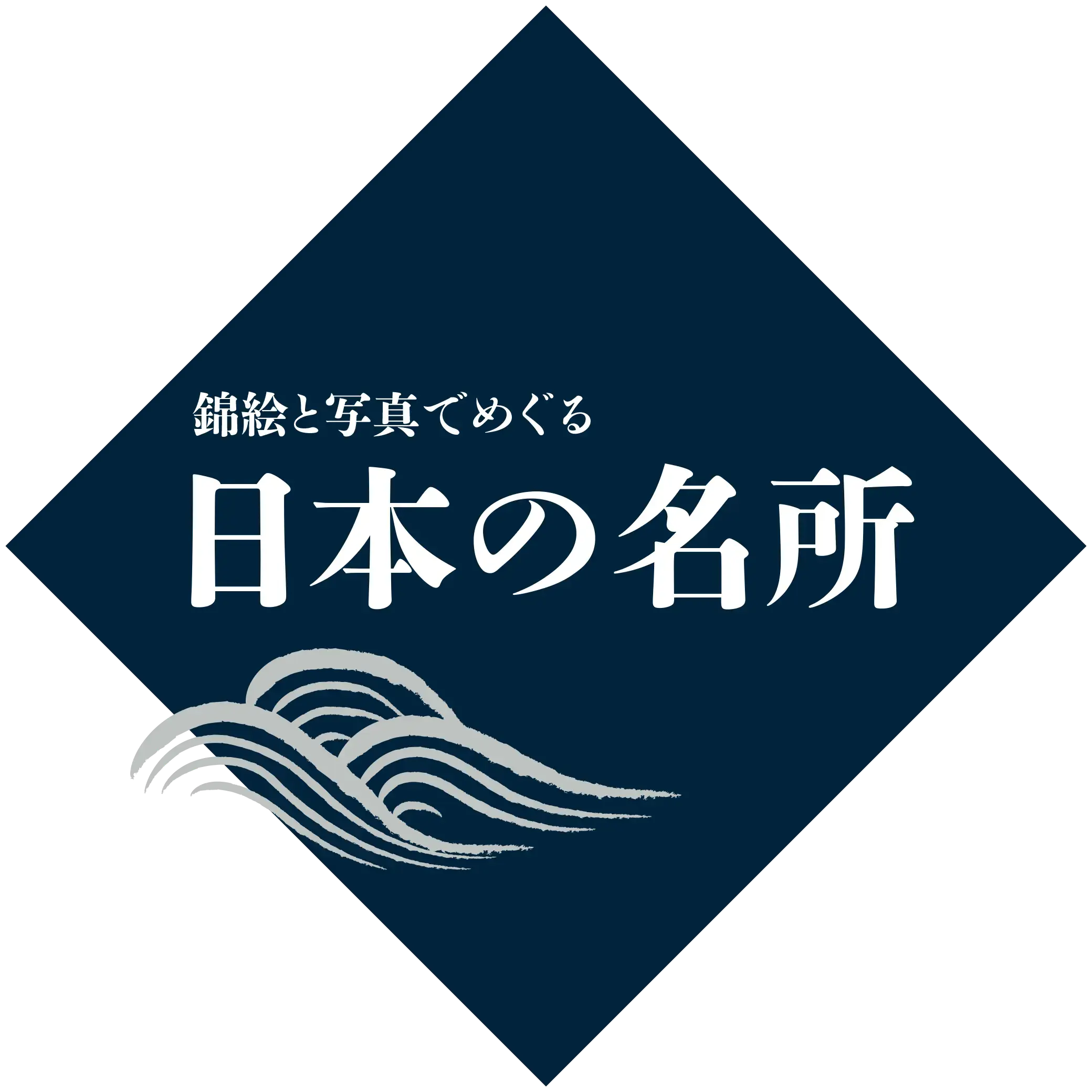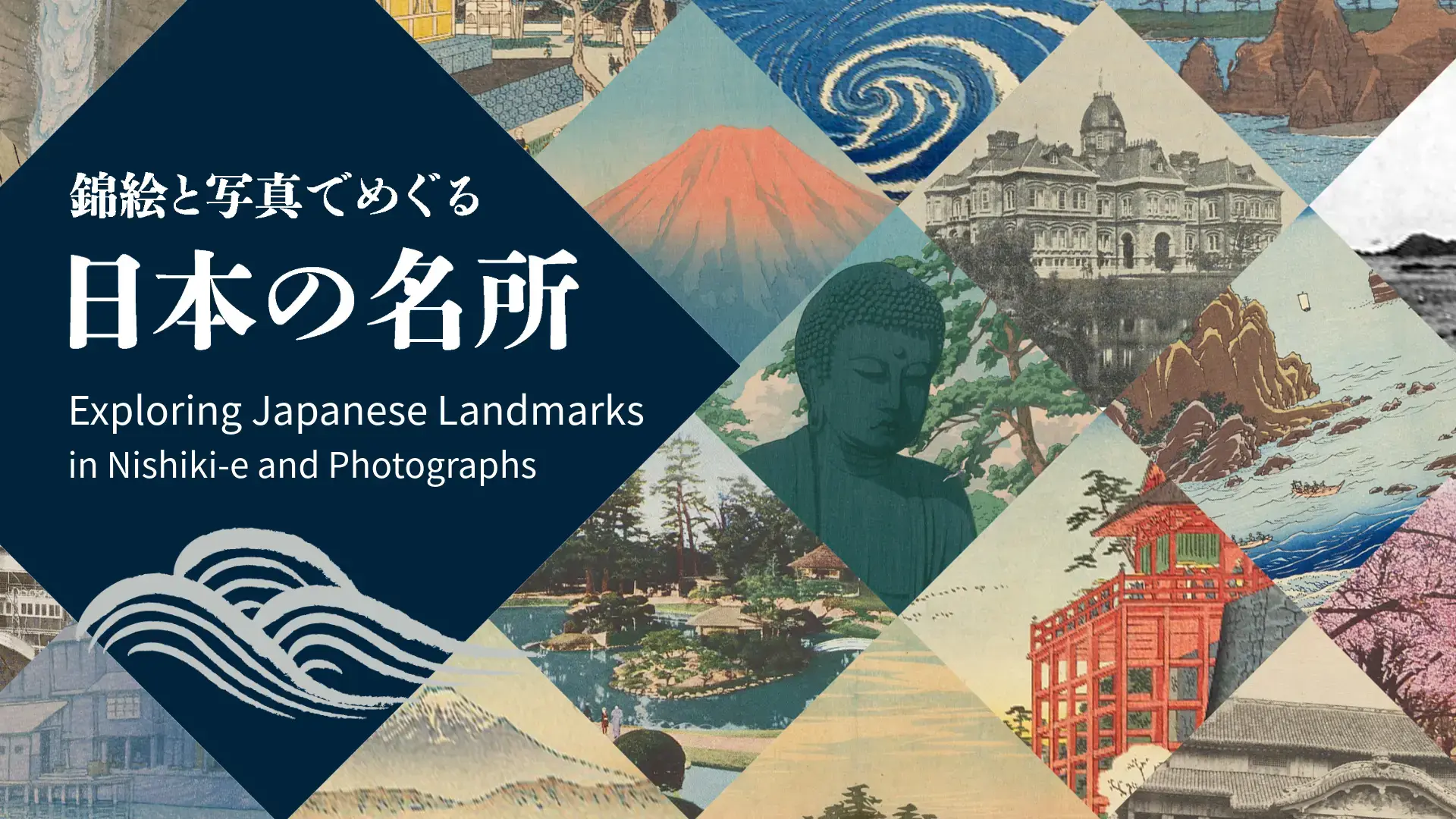
大阪の市場
このコラムは、平成20年に電子展示会「写真の中の明治・大正(大阪編)」の中で公開したコラムを移行したものです。内容は当時の記載内容に基づきます。
堂島の米市場、天満の青物市場、雑喉場の魚市場は近世大坂の3大市場であった。
大坂の経済が発展した理由は、幕府直轄地の城下町であったこと、「水の都」と呼ばれたように、前方には瀬戸内海、背後には京都や大和と結ぶ淀川や大和川を擁し、水上交通の立地条件に恵まれたことであった。また、寛文期(1661-1673)ごろ、日本海から下関をへて瀬戸内海を廻り大坂に達する西廻り航路が開かれ、さらに大坂と江戸間の海運の展開によって、全国的市場の「要」の位置をもつにいたったことも大きい。その大坂の物流の中心が、堂島の米市場、天満の青物市場、雑喉場の魚市場であった。
堂島米市場
江戸時代には、武士が農民から強制的に年貢米を取り立てていた。各藩の領主は、消費分を除いた米を売却し、その代金で物資を購入した。それが市場を発展させ、貨幣経済の発達を促していった。領主が米を売る市場は大坂に集中して大坂の米市は繁栄し、日本国中の標準相場となっていった。寛文年間に大坂で米市を創設した淀屋については西鶴の『日本永代蔵』にも描かれている。
河村瑞賢の堂島川改修によって堂島新地の町割が行われ、元禄10年(1697)に淀屋の米市が移転して堂島浜通り1丁目に堂島米市が発足した。幕府は米切手(蔵屋敷に持っていくと米と交換できる)の売買を禁止していたが、享保初年(1716)米価が下落したため、引き上げ策として米切手の売買を許可した。この米切手は正米取引(年貢米の現物取引)を対象としたものだったが、享保15年(1730)に帳合米取引(帳簿上でのみの取引)を許可し、二つの取引による堂島米相場会所が成立した。市場は幕末まで活況を呈したが、幕府の弱体化により、米の流通統制の政策が破綻して、堂島米市場は衰退し、明治2(1869)年同会所は閉鎖された。
4(1871)年4月、磯野小右衛門らが再興運動を起こして、堂島米会所が開設され、9(1876)年8月には、五代友厚らにより、保証有限会社堂島米商会所が設立された。江戸時代から事務所前の道路を寄り場にしていたが、立会所を新築し、浜側に市場をつくり、帳場を設けて、近代資本主義下の市場にふさわしいものになった。26(1893)年10月に取引所法が施行され、堂島米会所は大阪堂島米穀取引所に改称、42(1909)年には全焼したが、その後も繁栄を続ける。しかし、昭和14(1939)年10月には米穀配給統制法の施行で、日本米穀株式会社に吸収されて、堂島の米市は幕を閉じた。
なお、堂島の地名の起こりについては、6世紀に建立された「薬師堂」のある島、という意味から称されるようになった(『北区史』)という説や、曽根崎川と堂島川の二つの川(革)にはさまれているところから鼓の筒(どう)になぞらえてこの地名がおこったという説(『摂津名所図会大成』)がある。
天満青物市場
大坂の青物市場の歴史は古く、その起源は、石山本願寺が創建された明応5年(1496)までさかのぼる。門前に集まる人たちを相手に開かれた青物市が寺の発展とともに大きくなっていった。
その後何度か場所を変えたが、承応2年(1653)7月晦日に、町奉行所から許可されて、天満の地(天神橋上手から天満龍田町までの間の大川沿いの浜側、現在の天満3丁目)へ移転し、淀川の水運に恵まれて発展していく。周辺農村による青物作りの展開と、大坂三郷(北組・南組・天満組)市中の人口増加による需要の拡大によって発展し、大坂の住民が消費する野菜を独占的に供給していた。紀伊、近江、山城その他畿内各地から、ウグイス菜(小松菜の古名)、三葉、セリ、ウコギ、天王寺蕪、壬生菜、伏見孟宗笋、河内蓮根、紀州ミカンなどが集まって取引されてにぎわったという。
市が盛んになると、天満以外にも、道頓堀新市、堂島新市、堀江新市、曽根崎新市などの設立運動が起こったが、天満青物市は、そのたびに反対訴訟を起こしてそれを封じ、明和9年(1772)冥加銀を納めて40軒の問屋株、150軒の仲買株が免許された。新市を認めないだけでなく、市中の立ち売りや近郊農民による直接売買の禁止も公認させ、株仲間による完全な問屋独占に成功した。しかし、この特権的地位も長続きせず、寛政10年(1798)には、周辺26村の農民の市場内立ち売り場が設立される。
明治期になると統制から開放され、青果物自由市場が広範に発達していく。しかし、昭和6(1931)年11月に天満青物市場は大阪市中央卸売市場に統合され、その配給所になった。こうして、20(1945)年5月戦災で全焼して廃止されるまで、天満青物市場は、290年余りにわたって、生鮮食品流通の拠点として大きな役割をはたし続けた。
雑喉場魚市場
慶長20年(1615)5月の夏の陣後、大坂は幕府が畿内支配の体制を確立する中心地となった。また、戦火からの復興に携わる人々が大坂に移り住み、人口の増加とともに食糧の消費地になっていった。
魚問屋の集落は、大坂の都市形成にともなって天満鳴尾町、本靱町・本天満町(伏見町)、上魚屋町(安土町)と移転を重ね、慶安~承応年間(1648-1655)には、港に近い「四辺清爽」(『雑喉場魚市場沿革史』)な鷺島一帯に形成された。その地域は日本で最初の鮮魚を扱う卸売市場として、雑喉場町と呼ばれるようになる。元禄年間(1688-1704)には、全生魚問屋が移転を終えて、享保5年(1720)には50軒を超えたという。
生魚の株仲間制度は、明和9年(1772)に、生魚問屋株84枚が公許され、寛政10年(1798)4月に、初めての問屋会所が設置された。この問屋会所は、生魚問屋が昭和6(1931)年11月11日に大阪市中央卸売市場に収容されるまで存続した。
明治になると、政府の命により「生魚商社」、「魚市場」と改称し、明治4(1871)年には、「市場掟書」によって株仲間制度は終結し、30(1897)年から「生魚卸売業」として営業するようになった。また、36(1903)年に、天王寺公園一帯で開かれた第5回内国勧業博覧会において、生魚問屋や商店主が、「人工冷凍魚」「二階建冷蔵倉庫」「石油発動機付生魚運搬船の考案」などを出品して生魚業界に大きな影響を与え、近代日本水産業の発展に貢献したといわれる。雑喉場魚市場も、青物市場とともに昭和6年11月閉鎖されて、大阪市中央卸売市場に統合された。
雑喉場の地名は、種々雑多な魚介類が集まる場という意味である。「喉(こう)」は、古くから魚を数えるのに用いた数詞で、植物の蔓や藁を魚のエラにさして持ち運びしたことに由来する。
引用・参考文献
- 『大阪市史.第1-5』清文堂出版,1978-1979 (大阪市昭和2年刊の複製) 【GC163-30】
- 大阪都市協会編『北区史』北区制一〇〇周年記念事業実行委員会,1980 【GC163-41】
- 新修大阪市史編纂委員会編『新修大阪市史.第3巻』大阪市,1989 【GC163-E5】
- 原田伴彦[ほか]『大阪古地図物語』毎日新聞社,1980 【GC163-39】
- 秋里籬島著,平野拓介編『摂津名所図会:武庫、莵原、八部、有馬、能勢郡』摂津名所図会刊行会,昭和9(1934) 【640-185】
- 船越政一郎編『浪速叢書.第7,8』浪速叢書刊行会,昭和2-3(1927-1928) 【554-128】
- 黒羽兵治郎編『大阪商業史料集成.第1輯』清文堂出版,1984 (大阪市立大学経済研究所昭和9年刊の複製) 【DC98-28】
- 本渡章『大阪名所むかし案内:絵とき「摂津名所図会」』創元社,2006 【GC161-H64】
- 島田小葉『大阪新繁昌記』駸々堂,明治29(1896) 【特20-816】
- 井原西鶴著,饗庭篁村校『日本永代蔵』(袖珍名著文庫;巻16)富山房,明治36(1903) 【94-112】
- 大阪市史編纂所編『堂島米会所記録』(大阪市史史料;第12輯)大阪市史料調査会,1984 【DH423-66】
- 高橋熊太郎編『堂島案内』田部鳴呼老,明治29(1896) 【特62-449】
- 『大阪堂島米商沿革』大阪堂島米穀取引所,明治36(1903) 【96-229】
- 大阪市史編纂所編『天満青物市場史料.上』(大阪市史史料;第28輯)大阪市史料調査会,1990 【DH421-E10】
- 大阪市史編纂所編『天満青物市場史料. 下』(大阪市史史料;第29輯)大阪市史料調査会,1990 【DH421-E10】
- 大阪市史編纂所編『諸国客方控・諸国客方帳』(大阪市史史料;第40輯)大阪市史料調査会,1994 【DH421-E42】
- 『雑喉場魚市場沿革史』大阪水産流通史研究会,1968 【W373-1】
- 大阪市中央卸売市場本場市場協会編『大阪雑喉場魚問屋史料』三一書房,1997 【DM615-G32】








